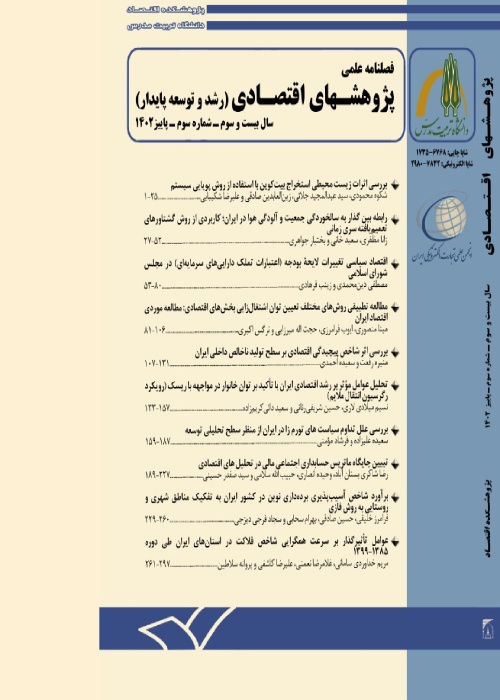Investigation of Environmental Effects of Bitcoin Mining Using System Dynamics Method
The growth of the digital currency market in the past years has attracted a lot of attention, and due to advantages such as transparency and new capabilities of the block chain, it is expected to continue its continuous growth in the future. The popularity of digital currencies such as Bitcoin and block chain-based currencies has created challenges and opportunities for the energy sector. Considering that electricity in most parts of the world are often produced using fossil fuels and non-renewable energies, the harmful environmental effects of digital currency mining are significant. Therefore, dealing with digital currency mining and considering related environmental costs can reveal the hidden costs of mining and provide a comprehensive and complete analysis in the field of digital currency. In this research, an attempt has been made to investigate and predict the trend of Bitcoin mining and related carbon dioxide emissions and environmental effects by using the method of system dynamics and design of the Bitcoin mining system from the time of the issuance of Bitcoin until 2034.The results showed that Bitcoin mining will lead to the emergence and release of pollution in the world and its highest level during the peak of hash (300 billion GH) will be about 400 million kilograms of CO2 per day and until the next halving, Bitcoin mining will be profitable and after that the amount of extraction and consequently the level of its pollution will decrease.
System dynamics is a method for modeling systems using accumulation, state and flow variables, which was introduced and developed in the 1960s by Forster (1961). This method became very famous in the 1970s due to the publication of the book "Limits to Growth". This book used the system dynamics model to analyze the absurdity of the idea of unlimited growth, and today the most comprehensive source for the system dynamics model is the book "Business Dynamics" by Sterman (2000). System dynamics can model the technical and social aspects of complex systems created by the adoption of Bitcoin and other cryptocurrencies. Therefore, due to its ability to explain emergent systemic phenomena in terms of interactions between agents related to human behavior and the (technical) framework of the system, it is a complete method to study the economic dynamics of this new form of money. By using the system dynamics modeling technique (Forster, 1961; Sterman, 2000), the evolution of the network hash rate can be explained to a large extent. Assuming the existence of an efficient market, it can be analyzed that the miners will continue to mine Bitcoin to a certain extent that their expected profit from mining (which is netted from the cost of mining electricity) is realized. In other words, miners behave rationally, which is a basic concept for analyzing and predicting the future behavior of the hash rate of the network.
In this study, it was shown that the Bitcoin mining process can be modeled as a dynamic system using the dynamic systems method. Modeling begins with the hypothesis of efficient markets in Bitcoin mining. In the designed model it was shown how the Bitcoin mining system can be explained with a negative feedback loop that reduces the mining profit to zero with a time delay. By simulating this model for the next three halving periods, approximately in February 2024, digital currency mining will reach the point of maximum pollution production, and in other words, until the next halving, Bitcoin mining will be profitable, and after that, the amount of mining and, consequently, its pollution level will decrease. This model shows that the methods and tools of system dynamics can be effective for modeling Bitcoin and can be proposed for other existing or new cryptocurrencies as well as to explain the behavior of complex social systems created by the application of block chain technology.
The results showed that Bitcoin mining will lead to the emergence and release of pollution in the world, and its highest level will be around 400 million kilograms of CO2 per day during the peak of hash (300 billion Gigahash). Bitcoin mining, like any other profitable activity, when its profitability increases, it will be more welcome for exploitation and earning, therefore, according to its function and benefits, its pollution is predictable and unavoidable, but the main issue for decision makers and policy makers in this field is to compare the amount of hidden and obvious costs of digital currency mining with its benefits, and another point is to compare these costs to other similar activities.
- حق عضویت دریافتی صرف حمایت از نشریات عضو و نگهداری، تکمیل و توسعه مگیران میشود.
- پرداخت حق اشتراک و دانلود مقالات اجازه بازنشر آن در سایر رسانههای چاپی و دیجیتال را به کاربر نمیدهد.



